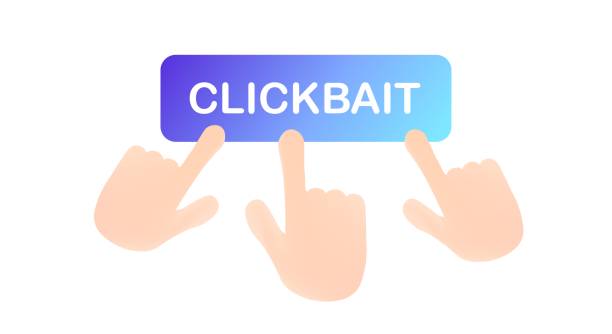If something seems too good to be true, often it is. Many creators use clickbait, especially when their art form is video content. It helps the video sell.
In today’s digital age, you’ve probably come across sensational headlines or eye-catching thumbnails that make you want to click on them. But have you ever wondered why some online content seems too good to be true? That’s because you might have encountered something called “clickbait.” Let’s explore what clickbait is and how you can recognise it.
What is clickbait?
Clickbait refers to online content—such as articles, videos, or social media posts—that uses exaggerated, misleading, or sensationalised headlines and thumbnails. All to entice people to click on them. The goal of clickbait is to generate high levels of traffic and engagement.
Often at the expense of accuracy or relevance. Essentially, it’s like a digital version of a catchy tabloid headline designed to grab your attention. Usually there will be snippets of the truth in there, but it has been completely stretched to the point it sounds far more exciting.
How to spot clickbait
Spotting clickbait isn’t always easy, but there are some telltale signs to watch out for:
- Overly sensational headlines: Clickbait headlines often use exaggerated language or make bold claims to lure readers in. They may promise shocking revelations, miraculous solutions, or unbelievable stories.
- Curiosity gaps: Clickbait thrives on curiosity gaps—those moments when you’re left wondering about something. Headlines that tease information without revealing too much are classic clickbait tactics.
- Misleading thumbnails: Clickbait thumbnails often feature provocative images or misleading visuals that don’t accurately represent the content. They’re designed to grab your attention and compel you to click.
- Emotional manipulation: Clickbait preys on emotions, using fear, outrage, or curiosity to elicit a reaction from readers. If a headline makes you feel overly emotional or incites a strong reaction, it might be clickbait.
- Low-quality content: Clickbait content often prioritises quantity over quality. Articles or videos may be hastily produced, lack substance, or fail to deliver on the promises made in the headline.
Why clickbait exists
Clickbait is prevalent on the internet for several reasons:
- Revenue generation: Clickbait content can drive traffic to websites. Increasing ad revenue and boosting page views. The more clicks and engagement a piece of content receives, the more profitable it can be for the publisher.
- Competition for attention: In a crowded online landscape, publishers must compete for users’ attention. Clickbait is a way to stand out and attract eyeballs in an environment saturated with content.
- Algorithmic incentives: Social media platforms and search engines often prioritise content that generates high levels of engagement. Clickbait content can exploit these algorithms to increase visibility and reach a wider audience.
While clickbait can be tempting to click on, it’s essential to approach online content with a critical eye. By learning to recognise the signs of clickbait, you can avoid falling for sensationalised headlines and misleading information. Instead, prioritise quality, reputable sources, and content that provides genuine value and insight.




